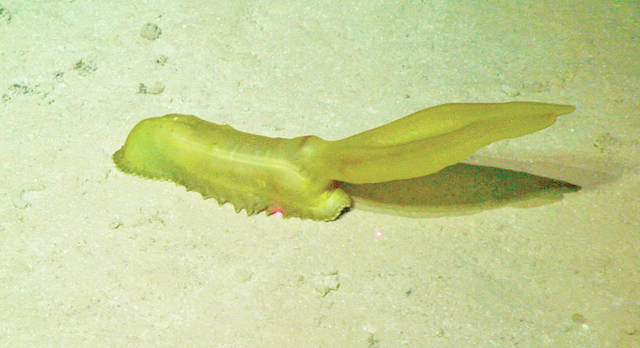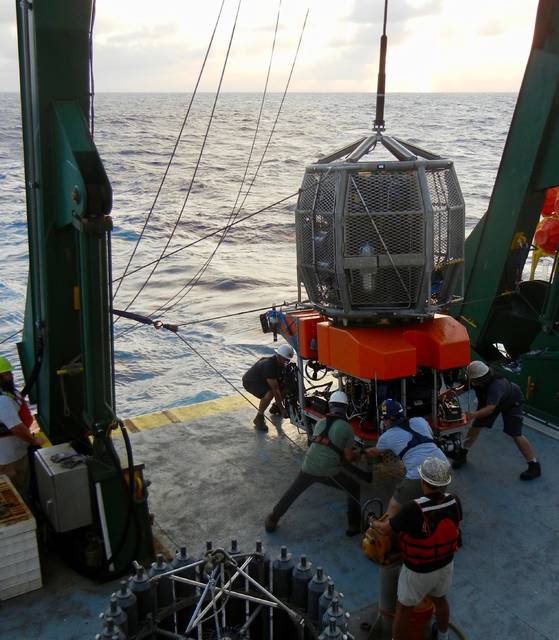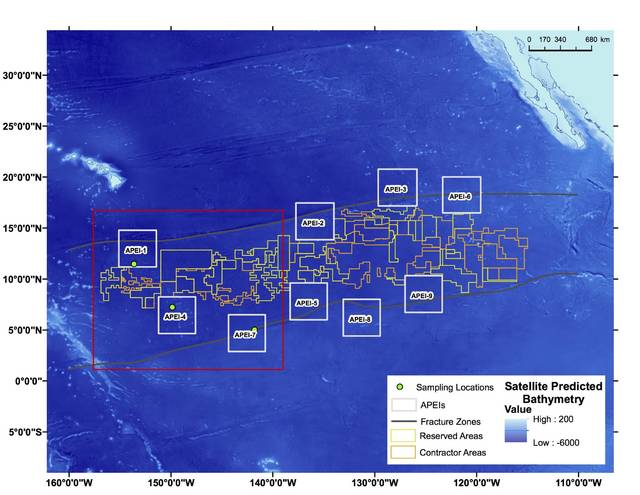HONOLULU — While manganese mining operations eye the Pacific Ocean floor as their potential next frontier, scientists have found the seafloor plains are anything but vacant.
Scientists discovered giant sea cucumbers, sponges and other life on the seafloor during a 34-day expedition in the western Clarion-Clipperton Zone of the Pacific Ocean, through 12 dives with University of Hawaii’s new remotely operated vehicle Lu‘ukai.
It was the first study of the biodiversity on the seafloor plains, currently designated as “no-mining areas” and part of the more than one million square kilometers of the abyssal Pacific seafloor that have been identified for possible seafloor nodule mining.
Manganese nodules are a potential source of copper, nickel, cobalt, iron, manganese and rare earth elements — metals used in electrical systems and for electronics like rechargeable batteries and touch screens.
“The diversity of life in these seafloor areas is really amazing. We found at least 10 species of giant sea cucumbers, a huge squid worm never seen before in the Pacific Ocean, and all kinds of sponges and other animals with really neat adaptations, such as sea cucumbers with long tails that allow them to sail along the seafloor,” said chief scientist Craig Smith, professor of oceanography in the School of Ocean and Earth Science and Technology.
A major goal for the research operation, dubbed the DeepCCZ Expedition, is to determine whether these protected areas are adequate to conserve the biodiversity in the region from the destructive activities of seafloor mining.
Concerns are seafloor mining could destroy marine life and seabed habitats over large areas. These seafloor habitats remain among the most poorly studied on the planet because they are remote and require specialist equipment to study.
Potentially these habitats house organisms ranging from giant sea cucumbers to new bacteria.
“Another unexpected find was a dramatic difference in the abundance of manganese nodules and animals living on them, over surprisingly short distances of a few hundred miles across the abyssal plain,” Smith said.
DNA samples were also collected from the environment, and from animals, to test new approaches to assess biodiversity . DNA samples from the animals collected will also aid in the identification and description of the many new species, and to assess their occurrence across the abyssal Pacific Ocean.
“This cruise was a wonderful opportunity to evaluate if three no-mining zones will be adequate protection for abyssal communities in the region, before seafloor mining begins,” said Jeff Drazen, project co-leader and UH oceanography professor.
The data collected on this cruise will take months to fully analyze. The scientists will use the data to help assess the adequacy of conservation measures presently in place to protect deep-sea biodiversity in the face of seafloor mining.








Mining manganese nodules worked as a cover for a CIA operation to attempt to recover a sunken Soviet submarine in the 70s, will it really be an effective cover for some other secret project? Well, given the obvious gullibility of many people today, it just might.